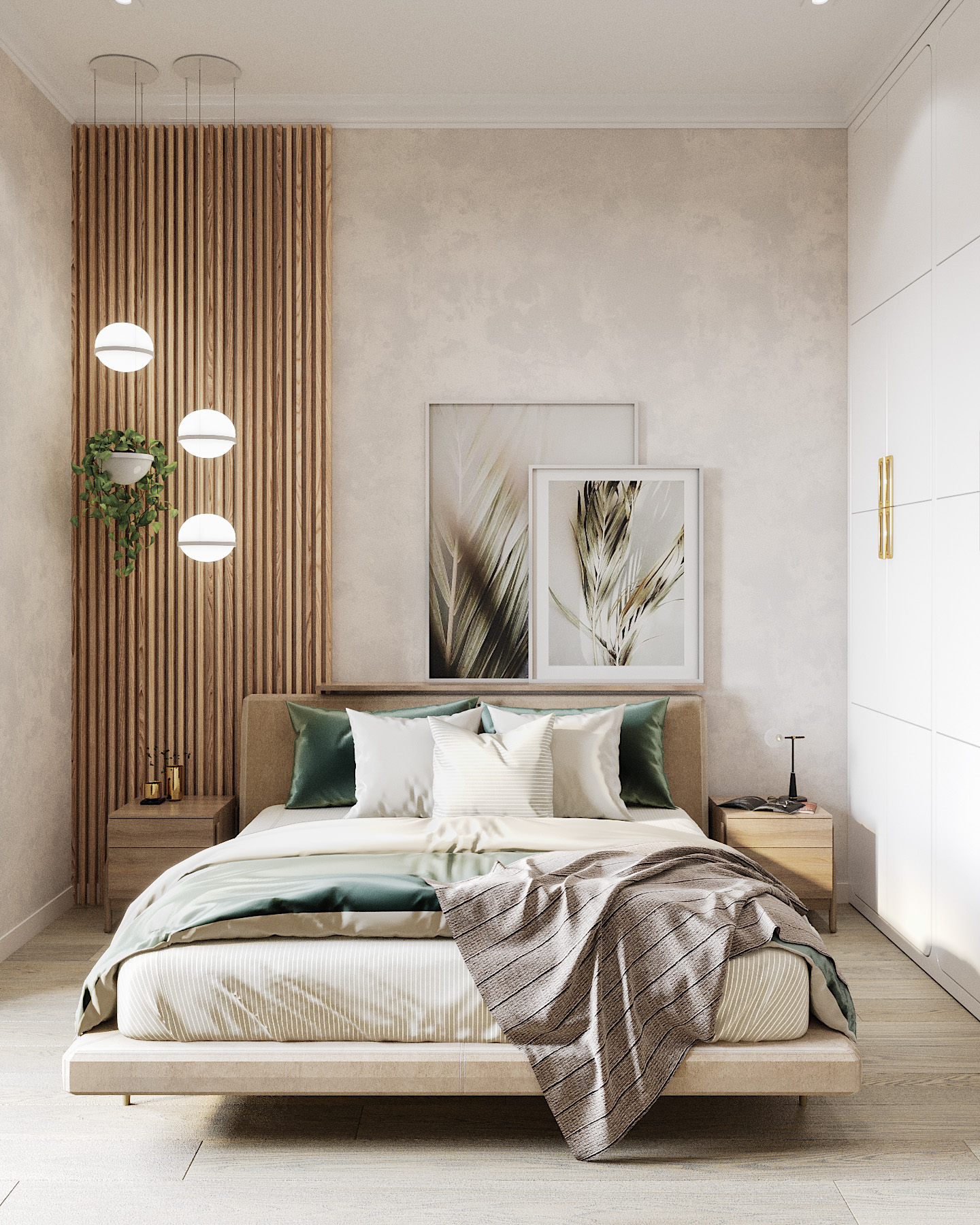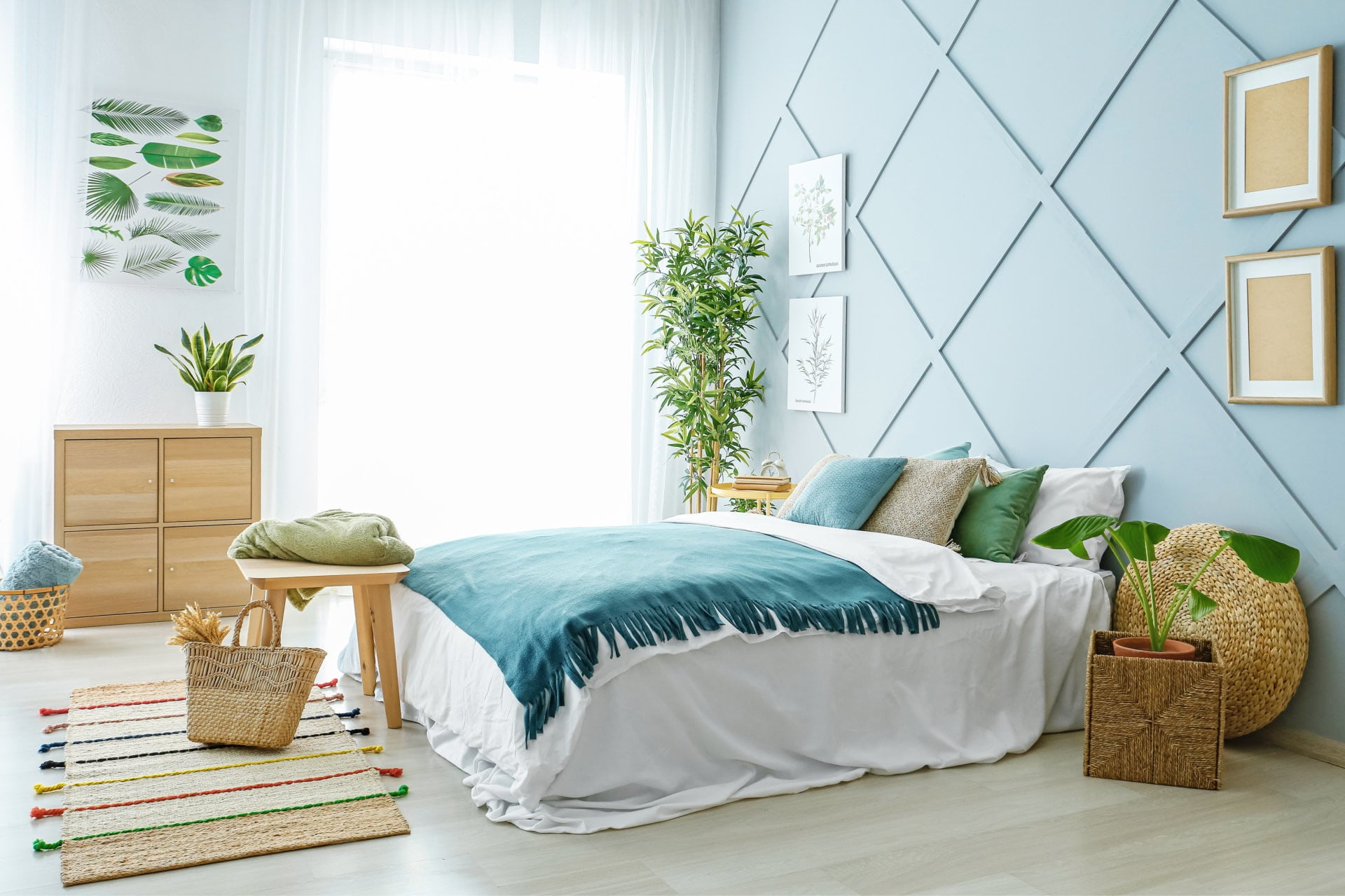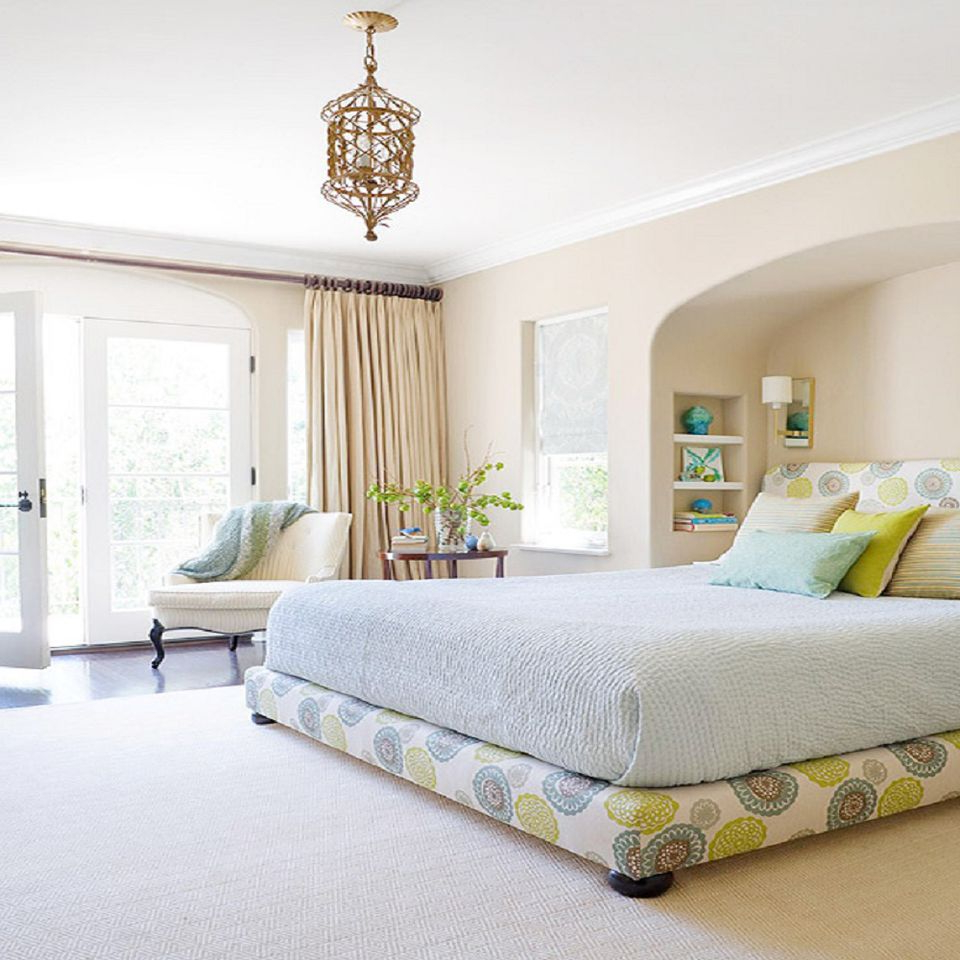Every night, we surrender to our beds, trusting them to heal our weary bodies and minds. But what if your bedroom could do more than just provide sleep? What if it could actually restore you? The secret lies not in expensive mattresses or fancy lighting, but in creating a space that truly supports your wellbeing. This isn’t about perfection or overthinking. It’s about understanding how your environment affects your health, mood, and energy levels. Think of your bedroom as your personal sanctuary – a place that responds to your needs rather than the other way around.
Most of us spend roughly one-third of our lives in bed, yet many of us treat our bedrooms like afterthoughts. We might pick out a mattress and maybe a lamp, but rarely consider how every element works together to support our physical and mental health. The truth is, your bedroom has the power to either enhance or sabotage your rest. It’s where your body repairs itself, where dreams take shape, and where your mind processes the day’s experiences. Creating balance in this space isn’t about following trends or having the most expensive furniture. It’s about intentional design that considers light, temperature, sound, and even the emotional weight of what surrounds you. When done right, your bedroom becomes a powerful tool for recovery, renewal, and inner peace.
The Foundation of Restful Spaces
Creating a restorative bedroom starts with understanding the basics of what makes a space conducive to sleep and recovery. Your bedroom should feel like a retreat from the chaos of daily life. The first step is to consider your room’s orientation and natural light exposure. North-facing rooms tend to stay cooler and receive less direct sunlight, while south-facing rooms get more warmth and light. This matters because your body’s internal clock responds to light cues, helping regulate when you feel alert versus sleepy. You don’t need to move your bed to face a particular direction, but understanding how light flows through your space helps you make better choices about window treatments and artificial lighting.
Consider how much natural light enters your room during different times of day. Morning light helps reset your circadian rhythm, while evening darkness signals to your brain that it’s time to wind down. If you live in a place with limited natural light, invest in full-spectrum lighting that mimics daylight. This isn’t just about aesthetics – it’s about supporting your body’s natural cycles. The right amount of light at the right time can make the difference between feeling refreshed and groggy.
Temperature: The Silent Influencer
Temperature plays a surprisingly big role in how well you sleep and how rested you feel in the morning. Your body naturally cools down as you prepare for sleep, typically dropping by about two degrees Fahrenheit. If your room stays too warm, this process gets disrupted, leading to restless nights and poor quality rest. Most people find that a room temperature between 65-68°F creates ideal conditions for sleep.
But temperature isn’t just about air conditioning or heating. It’s about the materials in your room and how they affect heat retention. Cotton bedding absorbs moisture and provides a cooling effect, while synthetic materials can trap heat. Consider using breathable fabrics for sheets and blankets. In winter, layering allows you to adjust comfort levels easily. A lightweight duvet or a single blanket gives you more control than a heavy comforter.
Some people swear by a cool shower before bed to help their body drop its temperature faster. Others find that a warm bath works better for relaxation. Both approaches tap into the same principle – helping your body shift into sleep mode more naturally. Experiment to see what works best for your unique physiology.
Lighting That Works With Your Body Clock
Lighting in your bedroom should be thought of as a conversation with your circadian rhythm, not just a way to see what’s in your room. Blue light from screens, phones, and computers can interfere with melatonin production, making it harder to fall asleep. This is why experts recommend avoiding screens at least an hour before bedtime. But that doesn’t mean you have to live in darkness.
Instead, think about your lighting choices strategically. During the day, allow as much natural light as possible to enter your room. This helps keep your internal clock aligned with the sun. In the evening, dim lights and switch to warmer tones. Red or amber lighting is particularly helpful because it doesn’t interfere with melatonin production. Many people use bedside lamps with warm bulbs or install dimmer switches to create gradual transitions.
Smart home technology can help automate this process. Some systems automatically adjust lighting based on time of day, creating a seamless transition from bright, energizing light in the morning to soft, relaxing light in the evening. These aren’t luxuries – they’re investments in better sleep quality.
Sound: The Hidden Element of Comfort
We often overlook sound when designing our bedrooms, but it’s one of the most impactful elements for rest. Noise can be incredibly disruptive, even if you don’t realize it. Your brain continues processing sounds even during sleep, so constant background noise can prevent deep restorative phases. This is especially true for those with sleep disorders or sensitive nervous systems.
The solution isn’t always to eliminate all sound. Sometimes, gentle white noise or nature sounds can actually improve sleep quality. The key is consistency and volume. White noise machines or apps can mask sudden sounds that might wake you up. Rain sounds, ocean waves, or forest ambiance can create a soothing backdrop that helps your mind settle.
If you’re sensitive to sound, consider soundproofing options. Heavy curtains, thick rugs, or even a bookshelf against a wall can help absorb noise. For those living in noisy areas, earplugs or noise-canceling headphones might be necessary. The goal isn’t to make your room completely silent, but to create an environment where you can sleep through disturbances without waking up.
The Psychology of Bedding and Textiles
What you sleep on matters more than you might expect. The materials, colors, and textures of your bedding influence both your physical comfort and psychological state. Your bed is where you spend a significant portion of your life, so choosing the right fabrics and colors can significantly impact your mood and energy levels.
Natural fibers like cotton, linen, and bamboo are generally preferred for bedding because they breathe well and don’t trap heat. They also tend to be gentler on skin, which is important for those with sensitivities. Synthetic materials, while often cheaper, can cause overheating and irritation. Pay attention to thread count – high-quality cotton usually has a thread count between 200-400. Anything higher might be more about marketing than actual comfort.
Colors also play a role. Cool blues and greens are associated with calmness and tranquility, making them excellent choices for bedroom decor. Warmer colors like soft yellows or warm oranges can create a cozy, inviting atmosphere. However, avoid overly bright or saturated colors, which can be stimulating rather than relaxing. Remember that the color of your bedding affects how your room feels, so choose wisely based on the mood you want to create.
Consider the texture of your sheets. Smooth, soft fabrics provide a comfortable surface for your body to rest on. Some people prefer the crisp feel of linen, while others find the softness of cotton more appealing. Try different options to see what feels right for your body and sleep preferences.
Decluttering for Mental Clarity
A cluttered bedroom often leads to a cluttered mind. This isn’t just an aesthetic issue – it’s a real psychological phenomenon that affects how well you sleep and function. When your environment is chaotic, your brain has to work harder to process information and find focus. This mental load can carry over into your sleep, making it harder to relax and unwind.
Start by removing anything in your bedroom that doesn’t serve a clear purpose. This includes clothing that’s not immediately needed, books you haven’t read in months, or decorative items that make you feel stressed. The goal isn’t to have a sterile space, but to create an environment that feels clean and supportive.
Consider implementing a ‘one in, one out’ rule for items that come into your bedroom. Every time you bring something new in, remove something else. This prevents accumulation and keeps your space manageable. Storage solutions like under-bed containers or closet organizers can help you maintain order without sacrificing functionality.
Some people find that having a designated spot for everything makes a huge difference. A drawer for work papers, a shelf for reading materials, and a small table for items you need within reach. When everything has its place, your mind feels more organized too. The physical organization reflects the mental clarity you want to achieve.
Personal Touches That Matter
While structure and consistency are important, your bedroom also needs elements that make it uniquely yours. Personal touches don’t have to be elaborate – sometimes simple items can have profound effects on how you feel in your space. Photos of loved ones, a favorite book, or a small plant can create emotional connections that make your bedroom feel like a true sanctuary.
The key is choosing items that enhance rather than distract. A few carefully selected photos might bring joy, but too many can overwhelm. A single piece of artwork can create a focal point, while multiple items might create visual clutter. Consider the energy each item brings to the room. Does it make you feel calm or stimulated? Does it encourage rest or draw your attention away from sleep?
Some people find that incorporating elements of nature helps them feel more grounded. A small potted plant, dried flowers, or even a bowl of stones can create a connection to the natural world. These items often have calming properties and can serve as reminders of peaceful moments outside your bedroom.
Remember that your bedroom should reflect your personality and needs. Whether you’re drawn to minimalism or enjoy rich textures and bold colors, the space should feel authentically you. This personalization creates a sense of ownership and comfort that’s essential for restorative sleep.
Creating Rituals Around Sleep
Your bedroom environment is only part of the equation. The rituals you establish around bedtime are equally important for creating restorative sleep. These routines signal to your brain that it’s time to shift from active mode to recovery mode. Without these transitions, your body may struggle to find that deep, restful sleep.
A consistent bedtime routine might include activities like taking a warm bath, reading a book, or doing gentle stretching. These actions help your body and mind prepare for sleep naturally. The timing is crucial – start winding down about thirty minutes before your intended sleep time. This gives your nervous system time to shift gears.
Some people find that journaling helps them release thoughts and worries before sleep. Writing down concerns or tomorrow’s tasks can free up mental space, allowing the mind to quiet down. Others prefer meditation or breathing exercises, which can be particularly effective for reducing stress and anxiety.
It’s important to avoid stimulating activities close to bedtime. This includes intense exercise, work-related tasks, or anything that raises your heart rate or stimulates your brain. Your body needs time to slow down and prepare for the restorative processes that happen during sleep.
Monitoring Your Progress
Creating a restorative bedroom is an ongoing process, not a one-time project. As your needs change, your space may need adjustments. Pay attention to how you feel when you wake up and throughout the day. Are you still tired despite good sleep? Is your energy level inconsistent? These signs might indicate that your bedroom environment needs tweaking.
Keep a simple sleep diary to track patterns. Note your sleep quality, how you feel upon waking, and any changes in your energy levels. This can help identify what’s working and what might need adjustment. Perhaps you notice that your sleep improves when you use a specific type of pillow or when you have a particular bedtime routine.
Don’t be afraid to experiment. Try different temperatures, lighting setups, or even rearranging furniture. Sometimes small changes can make a big difference. If you’ve tried several approaches and still aren’t sleeping well, consider consulting with a healthcare professional who specializes in sleep issues. They can help identify underlying problems that might be affecting your rest.
Long-term Benefits of Restorative Design
Investing time and effort into creating a restorative bedroom pays dividends beyond just better sleep. When your body gets proper rest, your immune system strengthens, your mood stabilizes, and your cognitive abilities improve. These benefits compound over time, leading to better overall health and quality of life.
A well-designed bedroom also reduces stress and anxiety. When you feel safe and supported in your sleeping environment, it creates positive associations that extend to other areas of your life. You’re more likely to approach challenges with confidence and resilience.
Consider how your bedroom impacts your relationships too. When you’re well-rested, you’re more patient, empathetic, and engaged with family and friends. Better sleep quality means better interactions, which creates a positive cycle in your personal relationships.
Finally, a restorative bedroom environment can help you develop better self-care habits. When you take care of your sleep environment, you’re demonstrating respect for yourself and your wellbeing. This mindset often extends to other aspects of your life, encouraging healthier choices and better priorities.
Creating a restorative bedroom isn’t about perfection or expensive upgrades. It’s about thoughtful intentionality and understanding how your environment influences your wellbeing. From temperature and lighting to the psychology of textiles and the importance of ritual, every element contributes to how well you sleep and how refreshed you feel. The journey toward balance in your bedroom doesn’t end when you finish decorating. It’s an ongoing process of refinement and adjustment based on your changing needs and experiences. Start small – perhaps with one lighting change or a new pillow – and build from there. Remember, your bedroom is your personal sanctuary, designed to support your most fundamental needs. When you prioritize rest and recovery, you’re investing in your future self. The peace you create in this space will ripple outward into every aspect of your life, making each day more manageable and fulfilling. The goal isn’t to transform your bedroom into a museum piece, but to create a space that feels like a warm embrace every time you lie down to rest.















